There is a saying that abs are cooked in the kitchen! Well, the same can be said about ways to get a smaller waist as well. Your main task is to get rid of (visceral) fat. And what is the main rule of weight loss? Calorie deficit. If you want to get the most petite waist your body type allows, you can only do it via proper dieting paired with an active lifestyle.
Unfortunately, you cannot spot-reduce fat. No matter what fitness influencers would have you believe with their titles of “Losing Belly Fat” or “Getting Rid of the Pouch,” fat loss happens simultaneously in the whole body. Thus, you have to bring your whole body in shape to see the waist as tiny as possible for your build. The key to a small waist lies in a calorie deficit and consistent training.
If you would like to learn all the tips and tricks of visually reducing the size of your waist, keep on reading!
Can You Spot-Reduce Fat on the Waist? Exercises to Shrink Waistline?
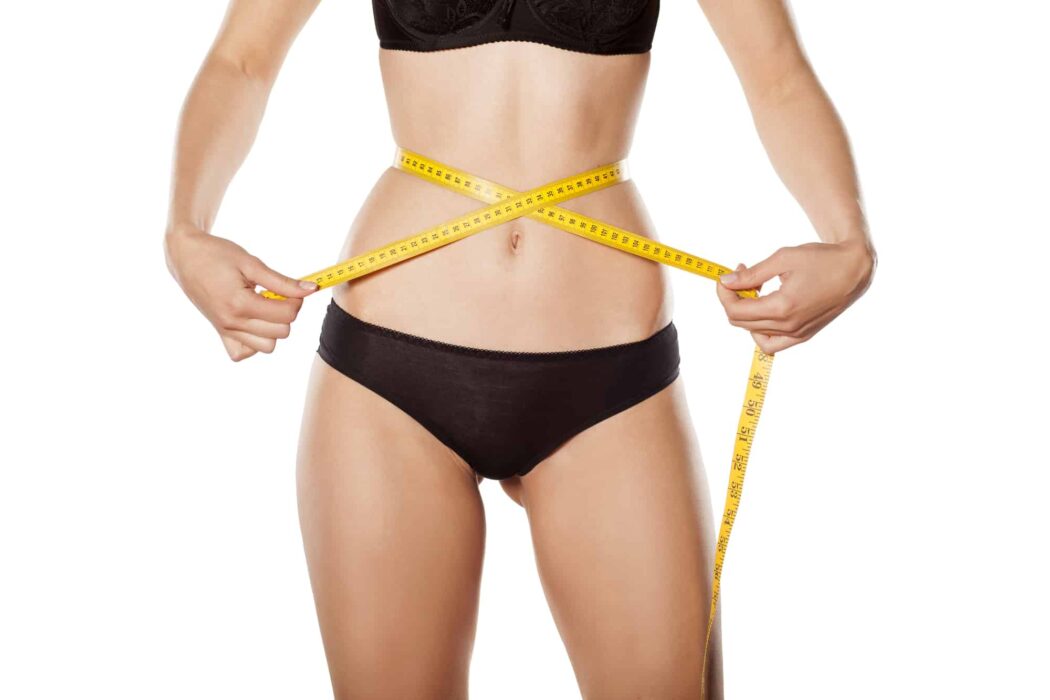
There is no such thing. Yes, we’d all love to be able to slim down in certain areas and round up in others. But, unfortunately, that is not possible naturally. Only a surgeon is capable of that.
If you want to get a smaller waist, you have to reduce fat overall. It’s not up to you where to lose more. Your body type and constitution will decide which areas slim down faster and which require more time.
Remember that you may not be able to achieve certain inches healthily. Even if you know that’s possible for other people. And that’s perfectly fine. You can still grow your bum and upper body if you want a more “hourglassy” shape.
How to Tone Your Stomach: 6 Best Exercises
Your goal should be achieving the tiniest (eat healthy at the same time) possible waist for your body!
What to Do to Get a Smaller Waist?
Create Calorie Deficit
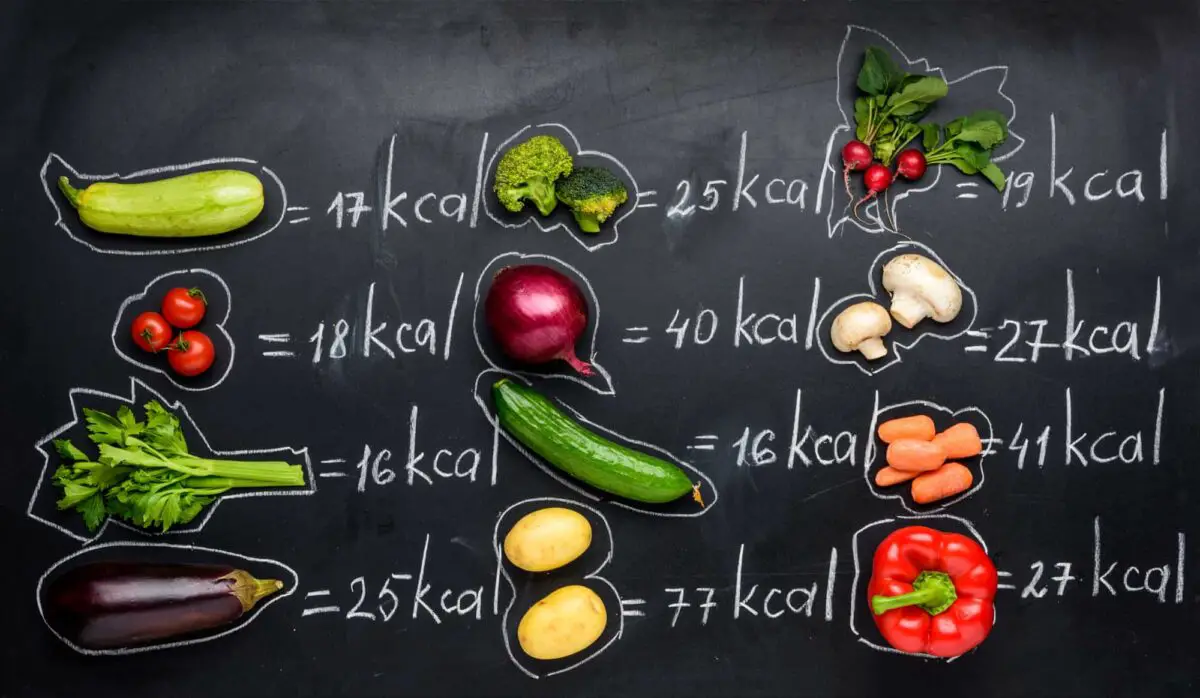
The first and most significant rule in losing weight is creating a calorie deficit. When your body’s energy needs are met, it stores excess calories, mostly as fats. No matter how hard you work out, if you are eating in a surplus, you’ll never see the slimming of the waist. At least not naturally. This science is just as simple!
Check this Healthline article Calories In, Calories Out for all the research conducted that proves this basic rule.
The calorie norm is a highly individual number for all people. It depends on a myriad of factors, including age, weight, height, daily activity level, workout intensity, and so on. And these are only the most obvious among them!
You can do everything with calorie intake in my article about the Total Daily Energy Expenditure Calculator. It discussed the TDEE formula, what component it’s based on, and generally how to calculate your BMR – how many calories you burn per day passively. This is the minimal number of calories you should consume for maintenance. If you lead an active life, you’ll add the number of calories you burn actively throughout the day to receive a new maintenance level.
Overall, the recommended deficit for a healthy human for losing around a pound a week is 500 calories.
For a moderate-paced weight loss (which is easily maintained), lower the deficit number somewhat.
Work Out Consistently
Theoretically, if you maintain a calorie deficit only by reducing the number of calories you intake, you’ll still see the results.
In practice, this is not the optimal way around weight loss.
- First of all, you need enough nutrients from food to keep your body healthy. And when you eat 900 calories a day, where would you get them?
- Secondly, without working out, you’ll lose some of your muscle tone. And that is more than an esthetic problem. You see, muscles require more maintenance energy than fat. If you lose what you have, your body will require less energy and fewer calories.
- Thirdly, the overall number of maintenance calories is dropping. The BMR formula clearly states that the more you weigh, the more calories you need. Thus, you get a scientific response to your weight loss – eat even fewer calories.
That is why you require fitness activity! And not specific exercises to make your waist smaller.
Regular training burns more calories and means that you can eat more food, thus receiving more nutrients.
Be sure to include resistance training as well as cardio. Weights help you build muscles meaning that you will increase your BMR over time.
What Other Tiny Waist Tips to Follow?
Now, after I’ve already covered the two most important things you should stick to slim your waist, here are some suggestions that, when mixed, will prove a slight boost in our journey to the desired inches.
Balance Your Water Retention Levels

Have you seen any weight loss show ever? You’ll see some whopping results during their first weeks. That is all the water that leaves the body initially. When your diet and daily water intake are not balanced, you tend to keep the water in. This is what all people do.
Your abdominal area may be swelling quite a lot, and you don’t even know it. But how do you reduce water retention? Don’t drink at all? No! Chronic dehydration will lead to more swelling, not to mention other negative consequences for the liver and other organs.
What you need to do is to drink your daily norm (around 30ml for a kilo of body mass=8 glasses) and reduce the sodium content in your food. Also, as you start to consume more veggies and green, you get more magnesium and potassium that are reported to lower water retention levels.
Less Salt, More Veggies!
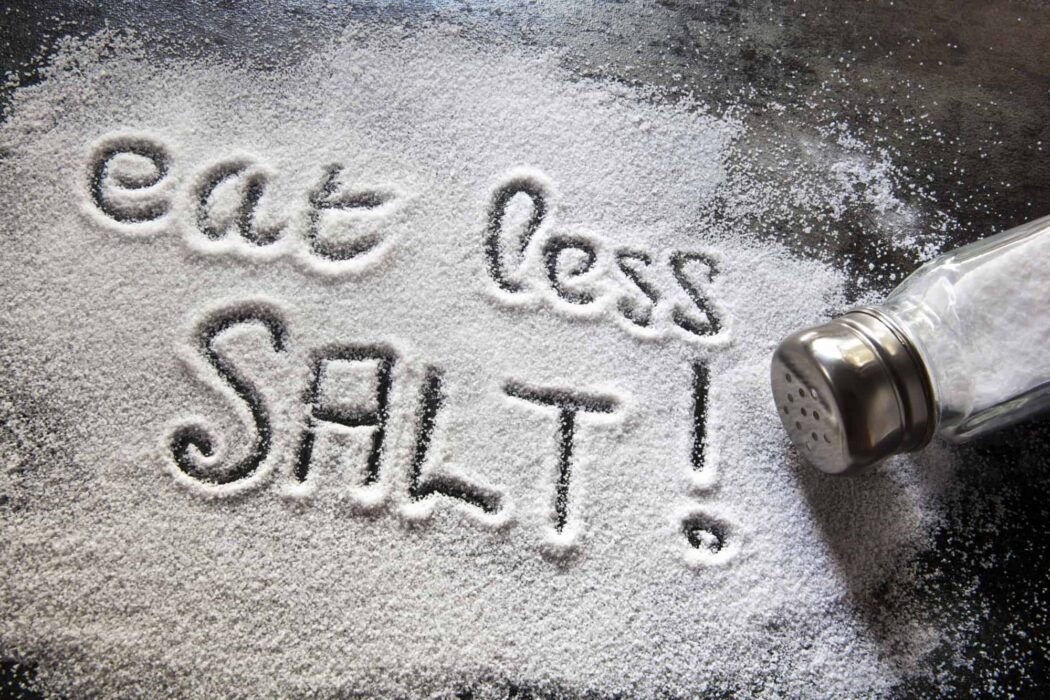
Such beneficial potassium-rich foods include:
- leafy greens
- cucumbers and zucchini
- potato/sweet potato
- cooked spinach and broccoli
- peas
- mushrooms
- pumpkin
- orange
- banana
- cantaloupe
- honeydew
- dried fruit (prunes, raisins, dates)
If you have chronic kidney disease, you probably have an issue as well. In this case, consult your doctor about the ways you can support your kidneys.
How to Lose Belly Fat in 2 Weeks
Check this article on potassium research.
Avoid Direct/Weighted Obliques Training
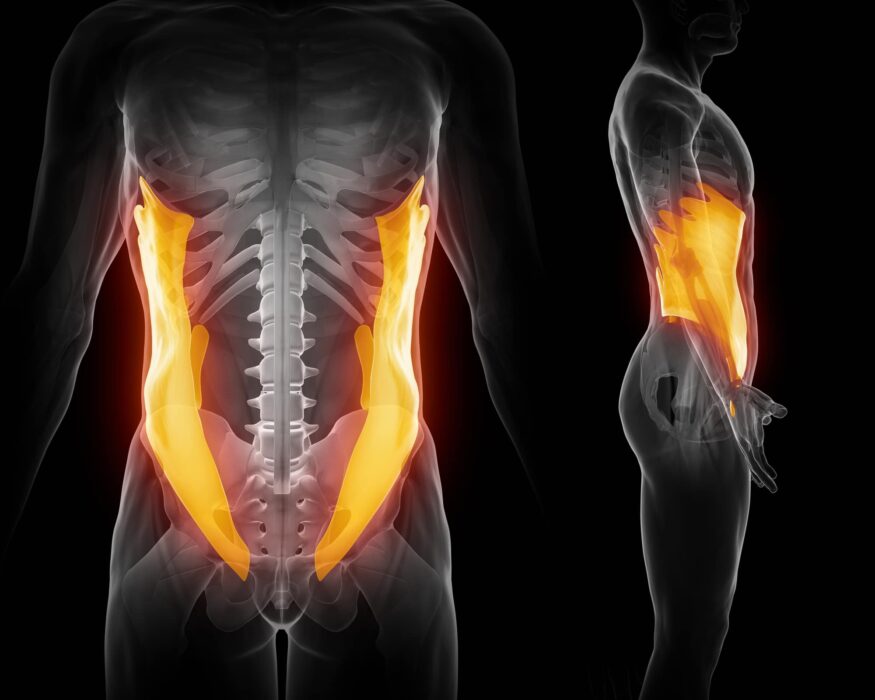
Who doesn’t want well-defined abs and a flat stomach, right? Paired with a tiny waist, you get a perfect image. And while reducing your fat will reveal abs on its own, training them will define the area even more. Besides, considering that your abs are engaged in most types of full-body workouts, you just need a little boost for the extra oomph!
However, when it comes to the obliques, not everything a black and white. Especially when it comes to women. Not all like well-trained obliques because they do make your waist broaden if you target them specifically. As you know, resistance training makes muscles grow. And obliques increase in size to the sides. Thus, you reduce the “waist-deep” visually. And while many people find the view pleasing, you may not, and that’s your rightful choice.
Thus, I’d suggest avoiding the following exercises, especially the weighted variants
- woodchop
- oblique side bends
- Russian twist
- windshield wiper
- any cable oblique twists
Some bodyweight exercises that engage obliques (mostly planks) will build their strength but not increase their size drastically. Keep them in your routine to increase your endurance and performance. Compound full-body exercises are meant to make you stronger and healthier, so don’t make yourself weak while rushing to reduce a few inches.
7 Effective Ways to Get Rid of Stress Belly
Go Through a Course of Massages
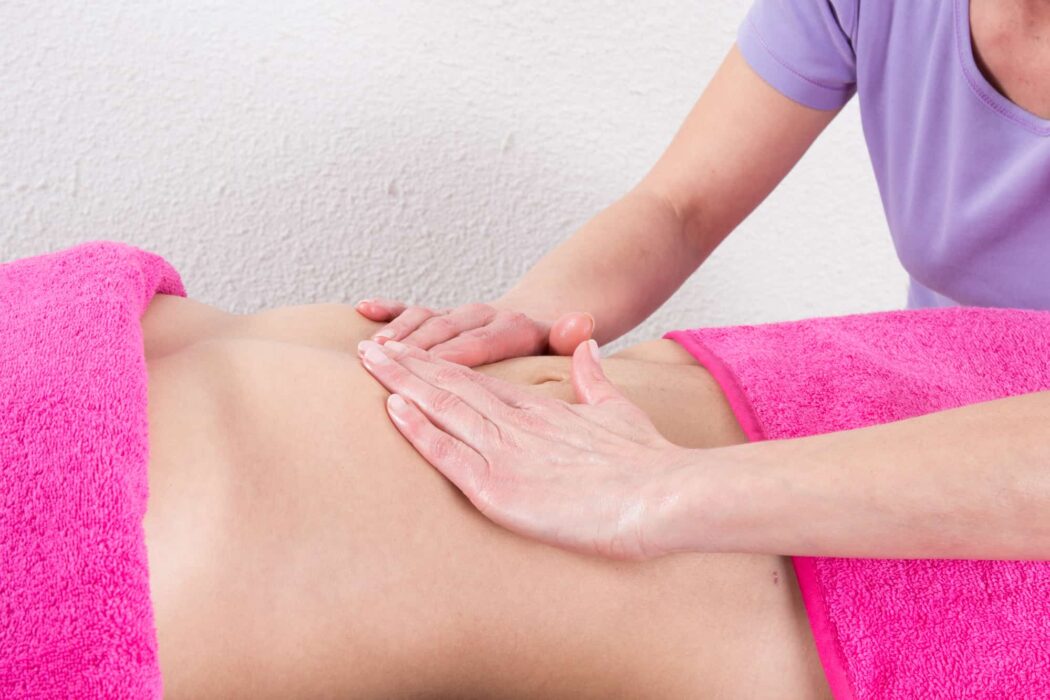
This suggestion has started as an anecdotal one! Lately, I’ve gone through a course of massages and noticed that my belly is shaped faster than without it. At the same time, I was keeping my regular workout schedule, and eating was less than perfect, I admit. But sharing this tip with no scientific proof of its effectiveness would be a scam. Anecdotal evidence is a strong tool, but I prefer to learn how exactly it works!
So, it turns out massage does help! And although I’d like to see more research in the area, some studies prove its effectiveness.
Its biggest benefit is lymphatic drainage. Lymph is fluid in our body that helps with fighting diseases. Such massages help to move it around and reduce puffiness. That was probably a vital factor for improving my shape.
In addition, abdominal massages improve the work of your digestion tract and reduce any possible constipation. That, in turn, removes the blockage and bloating it may be causing.
Massages improve blood circulation that favorably affects your metabolism. It also means that better blood circulation improves the results of your healthy diet and training.
Overall, I believe that massages are a great supplement to training, but they can’t replace it.
Rest and Sleep

How to have a small waist? Proper rest is just as important as training for improving your body. You need to unwind and sleep those recommended 7-9 hours a day for your body to work as it should. Have you noticed the difference in your stomach area after a night of good and insufficient sleep? It is astounding how much it affects the condition of our bodies.
When you lack proper rest, you’ll notice more bloating and swelling which does not accentuate your waist in any way.
Every fitness trainer without exceptions highlights proper rest as a requirement, not a recommendation. Also, did you know that an important plan of Christiano Ronaldo’s lifestyle? Check it in the CR7 workout article!
Keep Your Digestion Tract Healthy

I do not know all the details of your digestion, and whether you have them, so I won’t recommend a specific diet for that.
However, I’ll recommend you to visit a professional if you notice regular bloating above the norm and unpleasant feelings. Bloating enlarges your stomach and touches your waist circumference as well. To make you visually slimmer, you may want to avoid certain foods if they are too irritating for your stomach particularly.
But always consult a doctor for that!
Foods that are prone to causing bloating:
- bread, pasta, pastries if you react badly to gluten
- beans and lentils
- cruciferous vegetables (broccoli and cauliflower)
- barley
- onions
- beer
- cabbage
- apples
- cheese and dairy (if you are lactose-intolerant)
Take notes of how you react to them.
Train Core Muscles – the Lost Art of Stomach Vacuum
Unfortunately, I don’t see many fitness influencers promoting stomach vacuum. This is a somewhat lost art that bodybuilders in the past have practiced regularly.
7 Best Core Exercises to Build Strength at Home
In fact, a stomach vacuum is beneficial not only for visually slimming your waist but also for better posture, digestion, and overall fitness performance. This is probably the most effective among waist whittling exercises to improve the visual aspect.
But we are here for the waist and stomach, right? And the following research published in the International Journal of Physiotherapy proves that stomach vacuum therapy combined with aerobic exercises drastically lowers waist circumference and skinfold measurements in comparison to the control group that receives only aerobic training.
The research was conducted for eight weeks with three sessions of stomach vacuums per week. You can see the result here:
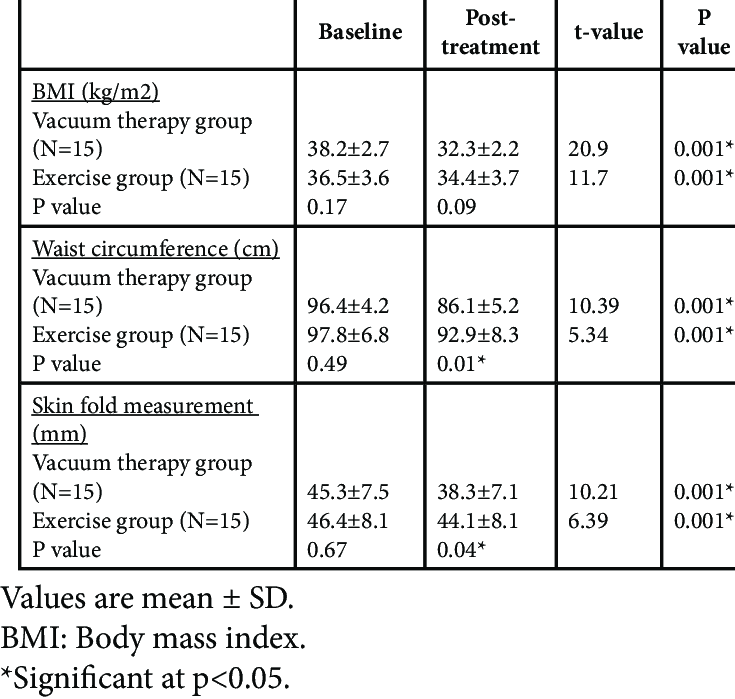
If you decide to try stomach vacuums, here’s an excellent tutorial for beginners.
Conclusion
Slimming down your waist is the process that largely depends on your diet and how much food you consume. For the max result, opt for healthier products as well in order to reduce bloating and indigestion – they will only increase your waist and stomach circumference.
Do not neglect training to boost up daily calorie expenditure and be able to consume healthy amounts of food.
Overall, the combination of the abovementioned tips should be enough to bring your waist to the desired inches.
I’d only like to highlight that you need to be patient to reduce visceral fat in your abdomen. This is a stubborn cluster that requires consistency and time not to bother you anymore. Besides, stressing over it will only worsen the effects of training and proper dieting. Remember the tip about rest and sleep? Add stress reduction to it as well.